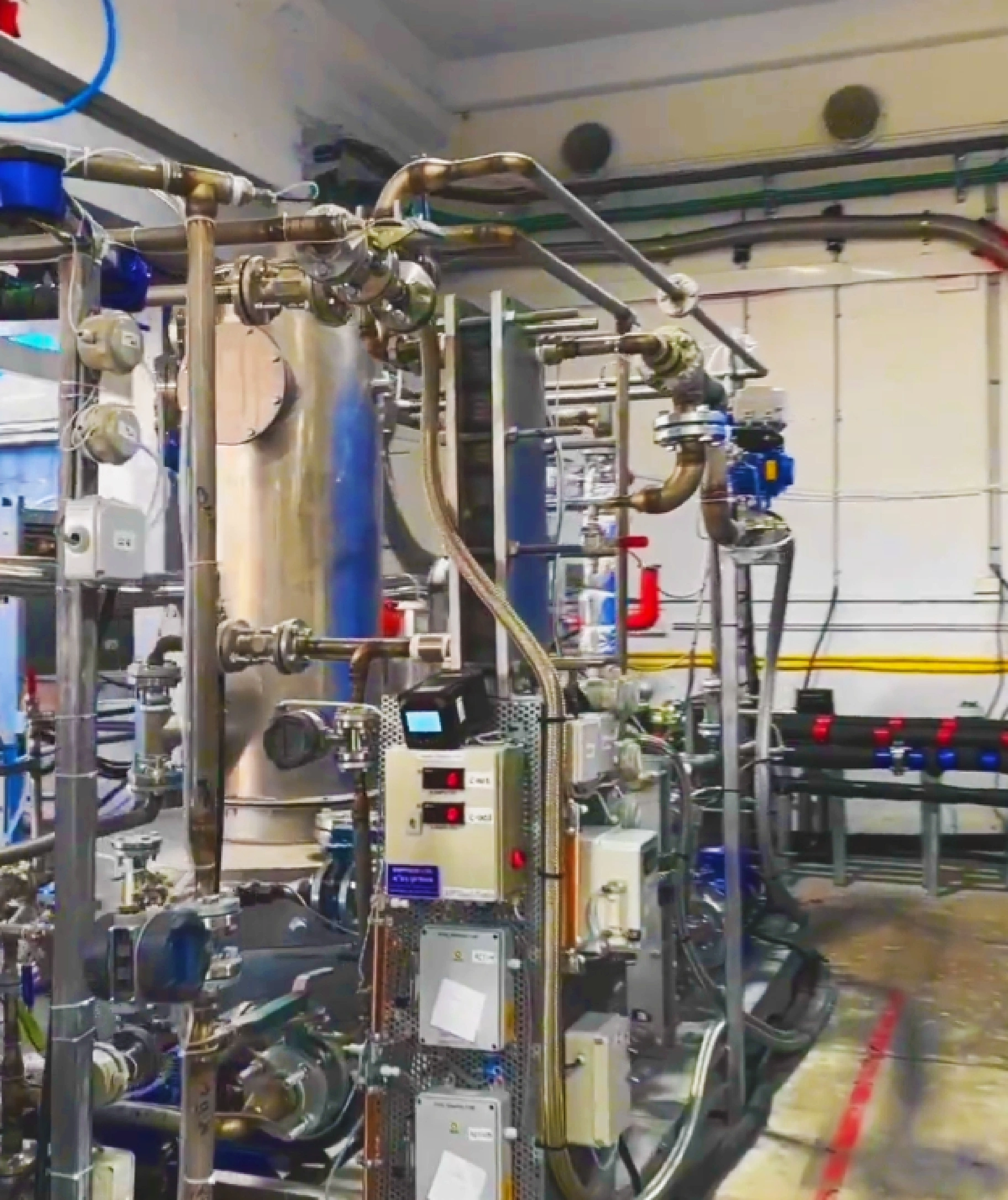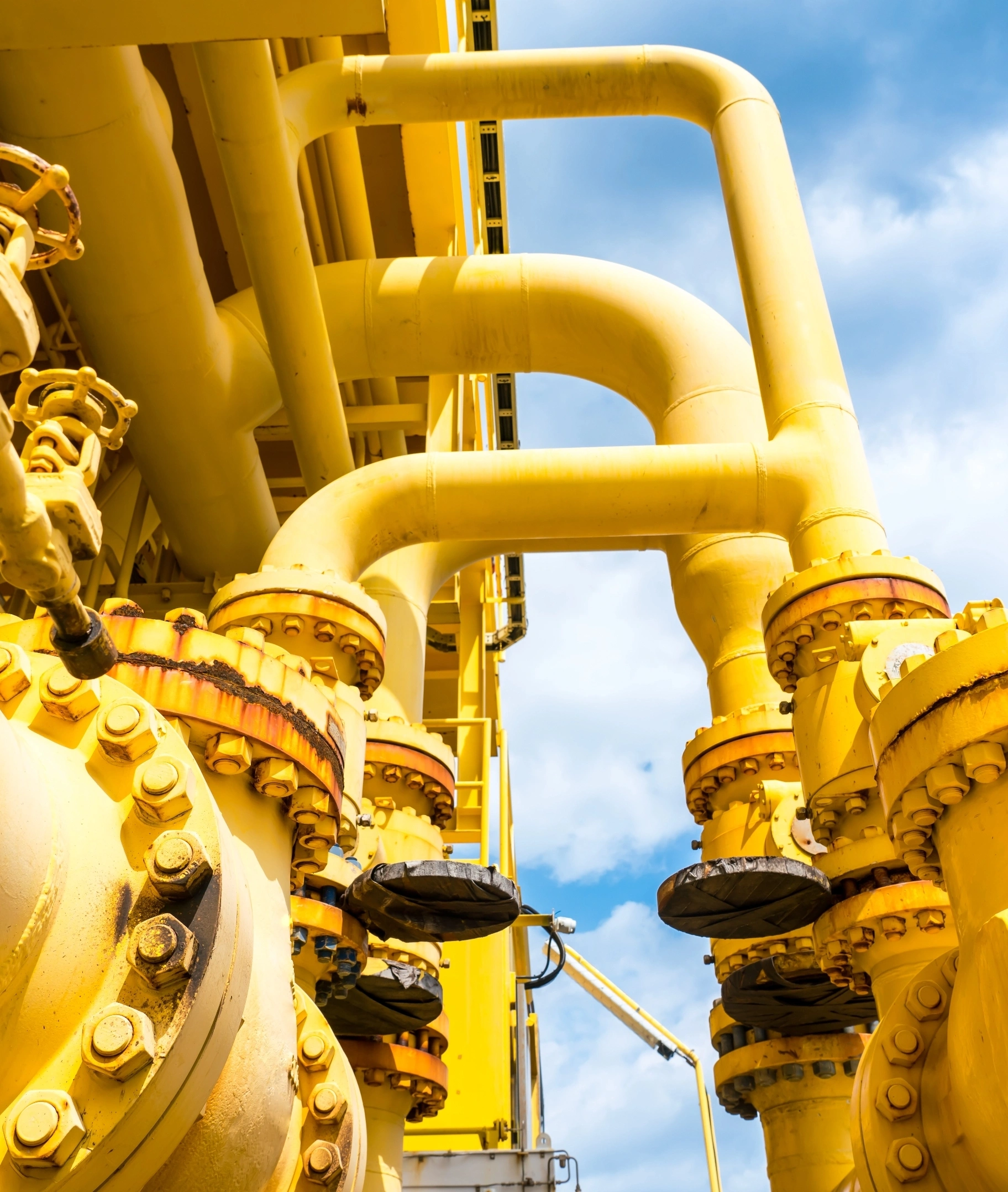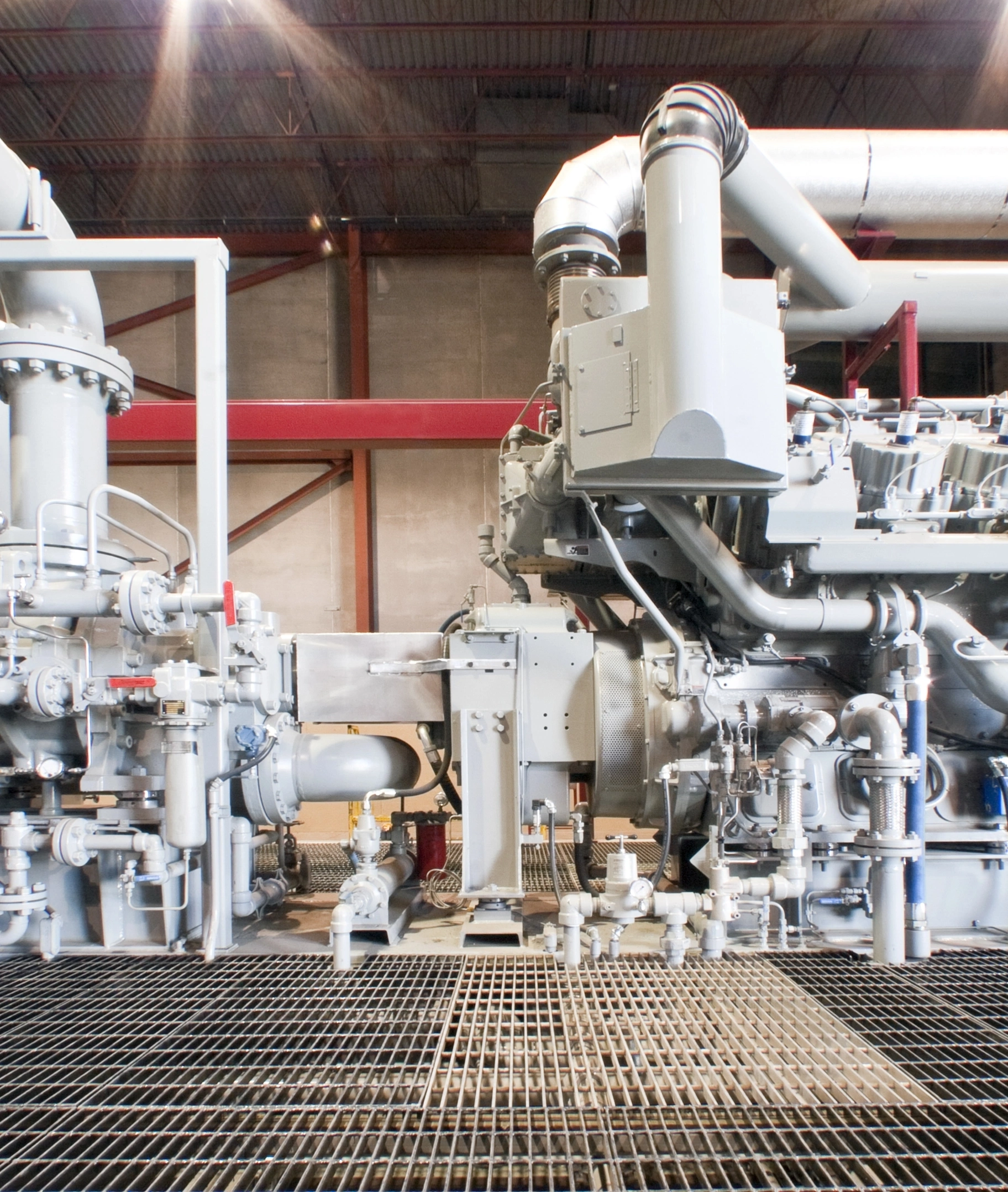
REDUCE EMISSIONS WITHOUT SACRIFICING RELIABILITY
Using our Carbon Bridge™ platform, we help gas-fired compression stations minimize environmental impact through a closed-loop carbon recycling process. It works by:
- Capturing exhaust emissions directly from compression station stacks
- Using electrolysis powered by stranded heat and renewable electricity to create hydrogen
- Instantaneously combining hydrogen with captured CO2 to create clean, storable low carbon Renewable Natural Gas (RNG)
This approach transforms on-site carbon emissions into usable fuel, significantly lowering the station’s carbon footprint while maintaining compression output and operational continuity.
BUILT FOR PIPELINE-INTEGRATED SYSTEMS
Standard Carbon’s solution is engineered to be compatible with remote, high-output gas compression stations. It integrates without disrupting pipeline service and supports long-term emissions compliance with a minimal footprint.
Our deployment model is ideal for:
- Midstream pipeline operators seeking decarbonization without service disruption
- Gas-fired compression stations located in regions with tightening regulatory requirements
- Sites needing to cut carbon emissions while protecting energy reliability
- Operators looking to reintegrate RNG into the fuel stream for internal reuse or sale on the open market
Maintaining real-time pressure control is critical in regions with grid limitations or low pipeline redundancy. Standard Carbon’s on-site system ensures compression reliability while delivering measurable emissions reductions.


BENEFITS OF DECARBONIZING GAS COMPRESSION STATIONS
- Real-time carbon conversion reduces carbon emissions without mechanical overhaul
- Produces on-site renewable natural gas for pipeline reuse or local dispatch
- Powered by clean, dispatchable renewable electricity
- Avoids downtime by integrating with existing station infrastructure
- Supports emissions compliance and ESG targets across the pipeline network
It also allows operators to future-proof their infrastructure by aligning with low-carbon fuel transition strategies increasingly incentivized by regulators and energy buyers.
